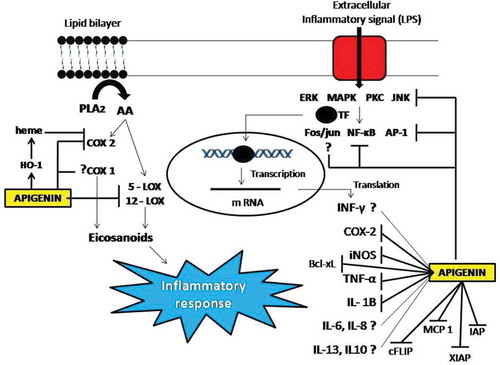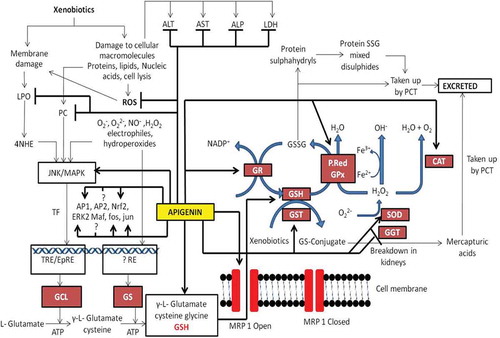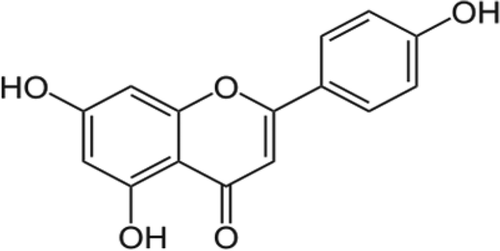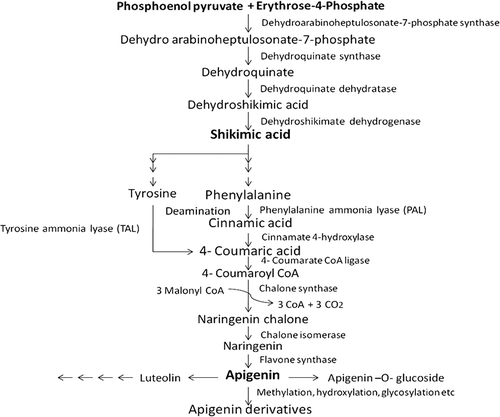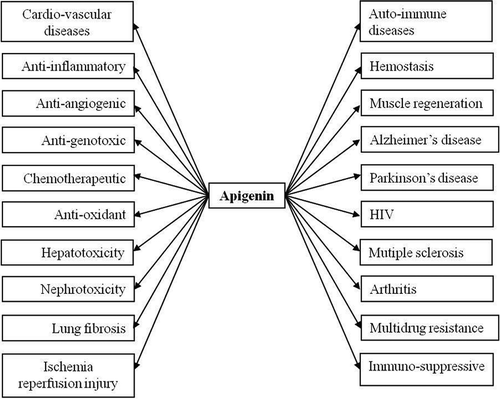Figures & data
Table 1. Effect of apigenin on the regulation of various inflammatory molecules.
Table 2. Protective effect of apigenin against some of the numerous toxic compounds. Carbon tetrachloride (CCl4), N-nitrosodiethylamine (NDEA), trinitrobenzene-sulfonic acid (TNBS), dextran sulphte sodium (DSS).
Table 3. Antigenotoxic potential of apigenin on various cell lines and animal models against different genotoxic agents.
Table 4. Apigenin as pro-oxidant, genotoxicant, or as an inhibitor of key enzymes to produce clastogenic effect in cancer cell lines.
Table 5. Protective role of apigenin among various cancer cell lines and in experimental animal models.
Table 6. Molecular targets of apigenin.
![Figure 1. Basic structure of flavonoids.[Citation6]](/cms/asset/94ea93ec-7c79-47c8-9fe3-5c891dac9c5a/ljfp_a_1207188_f0001_b.gif)
![Figure 3. Apigenin derivatives and natural analogues.[Citation29]](/cms/asset/d482cc5a-9ec5-4aa5-8484-867e8df2e95e/ljfp_a_1207188_f0003_b.gif)
![Figure 4. Structure of bi-apigenin.[Citation34]](/cms/asset/5d76dda5-f1b6-4a58-a086-c007b88f165d/ljfp_a_1207188_f0004_b.gif)
![Figure 6. Apigenin conjugates in plants.[Citation30,Citation33,Citation41,Citation42,Citation45,Citation47,Citation48]](/cms/asset/26ead040-6fce-4751-b623-e050351c768b/ljfp_a_1207188_f0006_b.gif)
![Figure 7. A generalized model of apigenin absorption and distribution in humans and other mammalian models.[Citation82]](/cms/asset/2e7b503d-fd97-4476-ab2d-5dc4a50da362/ljfp_a_1207188_f0007_b.gif)
